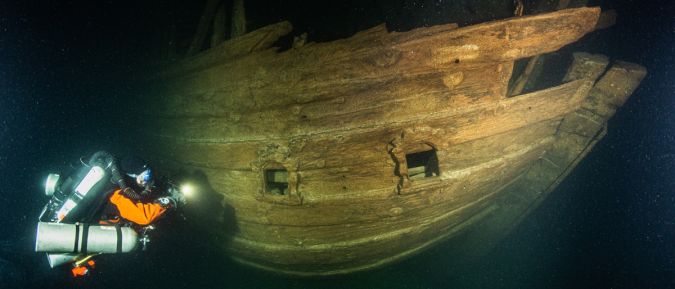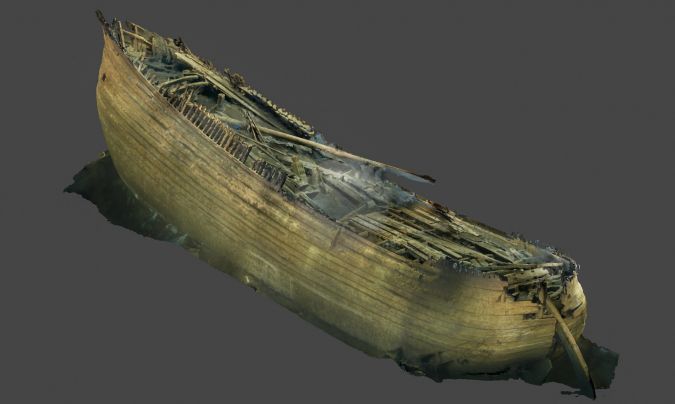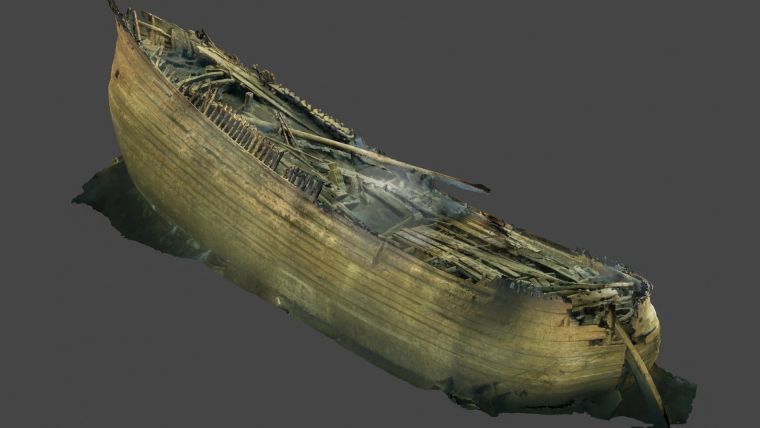The story of a 17th-century Dutch shipwreck in the Baltic Sea
The Finnish dive team Badewanne has helped to complete the documentary Fluit, about the 17th-century Dutch fluyt shipwreck, The Swan, which they discovered at a depth of 85m (279ft) in the Baltic Sea in 2020.
As the team recorded photogrammetry footage to produce a detailed model in 2020, specific tasks were already established for the 2021 return. These included making exact measurements of specific sections of the wreck to obtain an accurate 3D model, searching for specific sections of the wreck, and investigating the debris field around the actual hull.
Shipwreck preservation conditions
There are very few places where the preservation of shipwrecks is as good as in the Baltic Sea. Due to low oxygen levels, cold water, lack of light and the absence of wood-boring organisms, the condition of ships that have sunk in these waters is extraordinary. Combined with the importance of the Baltic Sea for maritime trade and as a site of historical conflicts, this has resulted in large numbers of underwater time capsules in the form of well-preserved wrecks.
The Badewanne team of volunteer divers based in Finland has for the last 20 years made it their mission to explore and document these historical shipwrecks and bring video evidence to the surface in order to share it with the general public.
Through close collaboration with researchers, heritage organizations and governmental departments around the world, the team has found, identified and documented many wrecks lost from the 17th century to WWII.

Dutch fluyt in almost intact condition
One such wreck was discovered in July 2020, when the team descended to 85m (279ft) onto what they thought was a WWI minesweeper. To their great surprise and excitement, they instead discovered a 17th-century Dutch fluyt, sitting upright on the bottom in an almost-intact condition aside from some trawl damage.
The fluyt, a three-masted ship with a very large cargo capacity for its size and an innovative technical design which allowed a smaller crew to man it, were highly successful vessels that increased the profitability of their voyages. Due to these features, their success hugely expanded Dutch trade throughout the world, including the Baltic Sea, where they traded wood, tar and hemp as part of the merchant navy.
The original discovery in 2020 was well received by worldwide media, and the story was shared through many media channels, including Quest Vol. 21 No. 3: “Project Baseline in Finland Raises Awareness of Threats to the Baltic.” Collaborative links to continue research of the wreck were also made with maritime archaeologists Minna Koivikko from the Finnish Heritage Agency and Martijn Manders from the Cultural Heritage Agency of the Netherlands, along with fluyt expert and maritime archaeologist Niklas Eriksson from Stockholm University.















